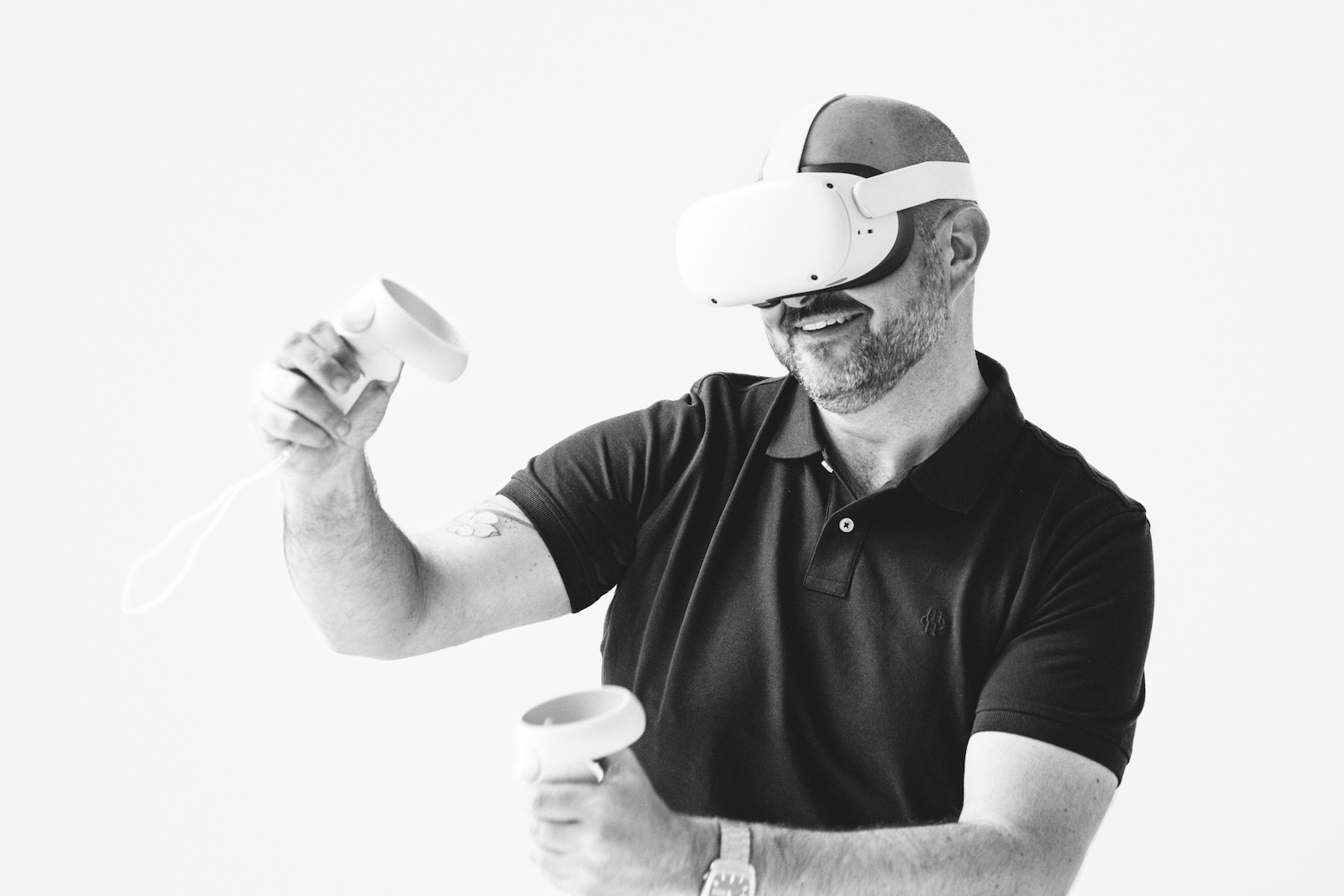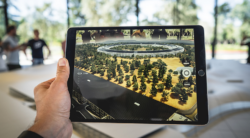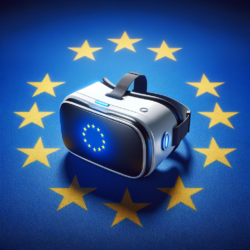
Reframing the Metaverse
While various advancements in technology remain integral to political discourse, artificial intelligence undoubtedly has taken center stage. Although the public hype around the metaverse may have decreased, the continued innovation and increasing maturity of the technology shows that the actual industry is growing. Driven by increased competition, hardware and software innovation is fostering a growing number of use cases for both commercial and personal use, under a broadly dispersed set of terms such as “XR,” “the industrial metaverse,” and “spatial computing.” Product releases and industry partnerships show that companies are also doubling down on the technology. In turn, this surge in adoption recenters the metaverse as an umbrella technology that is built upon innovation in areas ranging from AI to semiconductors. To capitalize on these opportunities and manage the associated risks, this shift requires a reorientation of stakeholder communication.
Adoption in a Nutshell
The growing relevance of the metaverse is manifesting itself in a rapid uptick in both professional and consumer use cases.
On the professional side, this is illustrated by the investments made by large companies in their search for an efficient future of work and production. Both functions are predicted to yield substantial efficiency gains. Relatedly, digital product prototypes allow testing and feedback to be integrated into early design and manufacturing processes.
The ability to interact with physical objects in real time also creates opportunities to add value by offering products as a service. For companies involved in manufacturing, interactive 3D virtual environments have immense potential to transform research and development. As an increasing number of pilot projects get fully implemented, managers are beginning to experience many of the benefits that the hype initially promised.
Meanwhile, innovation has continued on the consumer side as well, with the recently released bringing “spatial computing” even further into the public consciousness. Positive reviews and increased competition from more accessible models such as Meta’s Quest 3 herald a rise in consumer adoption rates. In addition to solutions that promote “spatial computing” as the next step in how we interact with PCs, the number of well-reviewed XR-specific or XR-supporting games suggests that the future will get even more immersive. Meanwhile, companies offering XR-based experiences such TIMERIDE, which offers historical city tours, have shown that tourism and civic education can also benefit from the technology.
Recalibrating Stakeholder Communication
However, effectively navigating these shifting dynamics requires a reevaluation of how stakeholder communication is monitored and engaged.
In particular, before communicating about the metaverse to private and corporate consumers, investors and other stakeholder groups, companies must carefully evaluate the used terminology. This involves considering the explicit and implicit connotations associated with terms such as “spatial computing,” “virtual worlds,” “metaverse” or “XR/AR/VR.” While “spatial computing” suggests an expansion of current computing capabilities, the roots of the “metaverse” in science fiction literature evoke associations with entire virtual worlds. Although connotations will always remain subject to change, how you communicate is key as it defines stakeholder attention.
In addition, PR should not focus solely on the metaverse as a technology trend competing for attention. Rather, it should be highlighted as an As the use cases above illustrate, it will continue to expand into retail and platforms. Emphasizing these connections to other key technology trends in stakeholder communications is important to ensure that the metaverse is not perceived as competing with others, but rather as a unifying force.
Finally, this shift also requires a recalibration of how political communication is monitored and engaged in, to maintain adequate foresight and assure the risks are manageable in an increasingly regulated environment. But exactly how pre-existing regulation in areas such as AI, online safety, and competition affects the metaverse remains an open question.
At the same time, stakeholders of all sizes should not underestimate their potential to shape the debate. Especially, start-ups and small and medium-sized enterprises (SMEs) in the XR sector should make use of their ability to create an enabling environment for the future of XR. Given the relative newness of the technology, demonstrating its potential can help policymakers experience the realities behind the buzzwords. Companies can achieve this, for example, by contributing to the policy discourse through white papers and proactive membership in relevant industry associations.
In conclusion, the term metaverse is becoming more widespread. Although it is no longer a popular buzzword, the tangible benefits of “XR,” “the industrial metaverse” or “spatial computing” are becoming more visible due to competitive advancements in hardware and software. However, this shift requires companies to adjust their communication strategies, both in public relations and public affairs, to maximize returns while considering the associated communication and regulatory risks.
Trilligent provides services to help you map your audience and improve stakeholder engagement by aligning it with issue salience and unifying individual efforts into a coherent strategy.
RELATED ARTICLES




